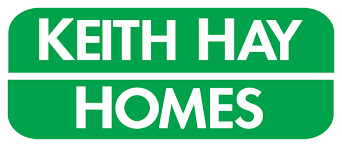Each time the Reserve Bank releases its latest decision about the official cash rate (OCR), there’s always a tremendous amount of commentary and media coverage, and the latest edition was no exception. Given that inflation (and inflation expectations) has shown signs of slowing and that the labour market now also seems to be easing a little, it was no surprise that the OCR was unchanged at 5.5%. But the RBNZ’s projections did perhaps contain some surprises. What did they say in the cold light of day, and what might it mean for property?
First, the RBNZ’s forecasts for GDP growth, the labour market, and inflation were barely changed. They still think that the mild recession over Q4 2022 and Q1 this year has ended (with Q2 quarterly growth perhaps +0.5%), but that we might also experience a double-dip, with GDP falling again over Q3 and Q4 this year – but only by a total of about 0.4%.
The unemployment rate is anticipated to rise from the current level of 3.6% to a peak of 5.3% by the end of next year – but, crucially, driven much more by a more significant labour force (and reduced hiring activity) rather than mass job losses. Indeed, employment is only expected to drop by the smallest amount late this year and in early 2024 before rising again.
Headline CPI inflation may be stubborn at 6% again in Q3 this year before falling back within the 1-3% target by Q3 next year (2.7%). In other words, it’s not a fast return to target for the headline inflation rate – instead, it’s another year or so until we see ‘normality’ again.
Meanwhile, the forecast tweak from the Reserve Bank that generated much more scrutiny was the upward push to the OCR track, now anticipated to peak at about 5.6% in the early stages of next year. That’s 0.1% higher than the current level of 5.5%, implying perhaps a 40% chance (0.1%/0.25%) of another OCR rise over the next six months or so.
Related post: High-level takeaway for investors from the August 2023 Monetary Policy Statement
However, I wouldn’t go overboard about that. Indeed, the detailed documentation suggested this was a technical change (reflecting an upward revision to the estimate of the underlying/theoretical ‘neutral’ OCR) rather than a definite signal that they intend to raise the OCR again.
In addition, when you consider the recent falls in dairy prices and the lagged effects on households of previous OCR increases (given that many mortgage holders are yet to fully reprice from older/lower fixed rates onto current levels), it’s not hard to build a case that the economy and inflation could be a bit softer than the RBNZ has projected – limiting further upside risk to the OCR.
And finally, what about the housing market itself? Consistent with the views of most other housing forecasters, the RBNZ now thinks the downturn in prices is over (more or less) and that some recovery might begin. But given ‘higher for longer’ mortgage rates, still-stretched affordability (or similarly, low rental yields), and the possibility of caps on debt-to-income ratios for mortgages at some stage in 2024, the next phase could still be pretty subdued/patchy. In fact, on the RBNZ forecasts, house prices at the end of 2026 are still below the 2021 peak.
All in all, the latest OCR decision and forecasts generated plenty of column inches – and perhaps, if anything, the chances of one more rate rise have edged up a little bit (as well as the timing for any OCR cuts being pushed back to early 2025) – but the implications for the housing market are arguably reasonably neutral. The next key event for investors – is the General Election in October.

Kelvin Davidson
Kelvin Davidson is the Chief Economist of CoreLogic New Zealand.















Add Comment